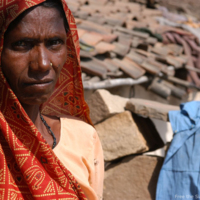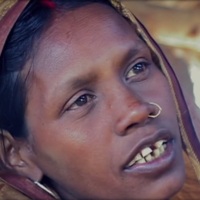
Labour officers came here [to the workshop] from time to time but they are only looking for bribes from the workers. Our owners are always changing the name of the factory so that we can’t complain about illegal practices. Most factories are not registered but there is no way to take legal action because owners bribe the local police.
Workers fool themselves that they can earn enough money by working hard but they can only keep up this rate for the first month or two. Without proper food and sleep, it becomes impossible to work so hard.
You won’t believe how many workers have died from the pressure of overworking. It’s impossible to work 14-15 hours a day after overtime and survive. We sleep less than 5 hours a day and eat unhygienic food.
The living conditions also create a lot of health problems. There is no free medical care and I spend Rs 200 on my health every month. I frequently get fevers, headaches and colds.
Narrative provided by Anti-Slavery International from their report ‘Slavery on the High Street: Forced Labour in the manufacture of garments for international brands’, June 2012.









